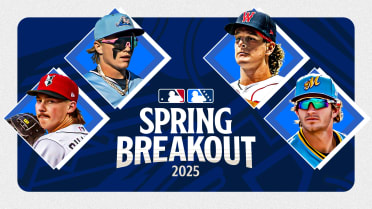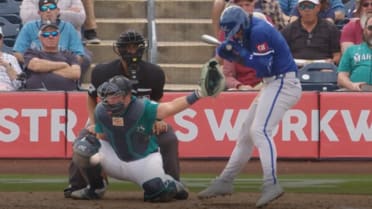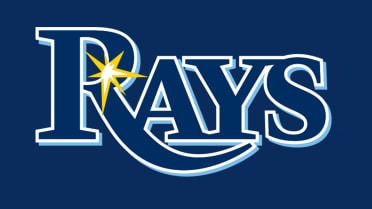These 5 pitchers are 2019's best breakout bets
Every winter around this time, we try to project a handful of starters who could reasonably be considered "breakout picks" for the upcoming season, and every year we have to start with the same issue: What is a breakout? How do we know that someone has or hasn't already broken out?
There's not any particularly satisfying answer to this, of course. It all depends on how difficult we want to make things for ourselves. We'll go with an arbitrary definition that states that you can't still be searching for a breakout if you just threw at least 100 Major League innings and kept your ERA south of 4.00. That eliminates a few good young pitchers who probably still aren't adequately valued on a national scale -- guys like German Marquez, Mike Clevinger, Brad Keller, Jameson Taillon, Jack Flaherty, Zack Wheeler, Kyle Gibson, Eduardo Rodriguez, Trevor Williams, and trendy 2019 Cy Young pick Walker Buehler.
No, if you want to have "a breakout," you've got to be coming from a little further away. (But not too far away; we're only including those who have made the big leagues, not ready-soon prospects like Forrest Whitley or Casey Mize.) Let's remember how well this worked headed into 2017 (when we highlighted Robbie Ray, Blake Snell, and James Paxton, among others) and try to ignore what happened last year (thanks for nothing, Tyler Chatwood).
A year from now, we might regret not including Matthew Boyd, Jakob Junis, Joe Musgrove, Jordan Lyles, Touki Toussaint, or Domingo German. There's just too many good young pitchers. Here's five of them who may be looking forward to brighter things in 2019.
Shane Bieber, Indians
2018: 4.55 ERA in 114 2/3 innings
Here's a good start, and a very fun list to follow. Bieber struck out 118 while walking only 23, giving him a 5.1 strikeout-to-walk ratio. Last year, 140 pitchers threw 100 innings, and here's the Top 10 list in strikeout-to-walk ratio:
7.8 Justin Verlander
7.3 Robbie Erlin
7.0 Chris Sale
6.5 Corey Kluber
6.2 Thomas Stripling
5.9 Max Scherzer
5.9 Jacob deGrom
5.8 Carlos Carrasco
5.3 Clayton Kershaw
5.1 Bieber/ Patrick Corbin
Okay, Erlin's a surprise, though he's more of a swingman anyway. Otherwise, this is a list that could easily be titled "the best starting pitchers in baseball," couldn't it? There's few things that correlate more strongly to pitching success than "get a lot of strikeouts and limit walks," and Bieber certainly does that.
He's also got a slider that generates a strong number of swing-and-misses, so why didn't he find more success? Part of it was because Bieber allowed a .356 Batting Average on Balls in Play, which was legitimately one of the highest marks allowed in the entire 21st century.
Now, part of that is on him, since his 37.7 percent hard-hit rate was better than only about 30 percent of other regular pitchers last year, so this isn't all about bad luck. Still, it's going to take more than one partial season for us to believe that he's a true-talent .356 BABIP guy. If that drops at all, so will his ERA.
Nick Pivetta, Phillies
2018: 4.77 ERA in 164 innings
Look, Philadelphia's defense was so bad in 2018 that you can probably assume every Phillies pitcher will have a somewhat easier go of it in 2019, simply because newcomer Jean Seguracan play a capable shortstop, and first baseman Rhys Hoskins is no longer going to be forced to play left field.
That's not the only reason that Pivetta had an ERA near five, of course, but there's also some reason to believe we already witnessed the beginning of his breakout. If we go back to the 140 pitchers who threw 100 innings, Pivetta's 27.1 percent strikeout rate was 22nd, basically tied with Aaron Nola, and better than Kluber, Chris Archer, or Noah Syndergaard. A big part of that was his high-spin curveball, which piled up 70 whiffs.
So what kept that ERA so high? It was the lousy defense that couldn't convert balls in play into outs, for sure, but also a high number of 'disaster starts,' the kind that destroy your ERA. Pivetta allowed six or more earned runs five times, tied for fourth-most in baseball. Clean up either of those issues, and that ERA drops. Clean them both up, and he'll look like a star.
Tyler Glasnow, Rays
2018: 4.27 ERA in 111 2/3 innings
Glasnow was a big part of the deal that sent Chris Archer to Pittsburgh, and at an initial glance, little changed after the move. He had a 4.34 ERA in 56 innings for the Pirates, and a 4.20 ERA in 55 2/3 innings for the Rays. He didn't add any strikeouts, and he actually allowed a higher home run rate.
But there were signs of progress, too. The Rays helped Glasnow harness some of his control problems, as his walk rate dropped from 14 percent in Pittsburgh to just over 8 percent in Tampa Bay. He induced more swings outside the zone, up from 24 percent to 29 percent. In 11 starts with the Rays, he allowed three runs or fewer in nine of them; his ERA was inflated by one very bad "7 earned runs in 2/3 of an inning" game in Toronto on Sept. 5. (He had a 3.23 with the Rays before that game, and a 2.96 after.)
While he's mostly a fastball/curve type of pitcher, there's also evidence that his new slider is a pitch worth building on. Take a look at the top of the slider leaderboard in an advanced Statcast™ quality-of-contact metric, and you'll find Glasnow there, just ahead of names like Albertin Chapman, Josh Hader, and Dellin Betances.
Josh James, Astros
2018: 2.35 ERA in 23 innings
This one's easy: It's about velocity. Huge, red-light, big-ticket velocity, the kind that's fueled an astonishing ascent. In 2017, James was at Double-A striking out less than a batter per inning; by the end of 2018, he was included on Houston's ALCS roster against the Red Sox.
It's not hard to see why. James struck out 171 in 114 1/3 innings at Double-A and Triple-A this year, then arrived in Houston in September touching 101 MPH. In 23 innings for the Astros, he whiffed 29, allowing only a .183/.264/.341 line against. He was one of just nine big leaguers to touch 101, and he wasn't even around for the first five months of the season.
There's a big difference between blowing away September call-ups in short outings and being a regular starter, obviously, and he needs to show he can pair his slider or changeup as a change of pace to the fastball, at least if he wants to remain in the rotation. That said, the opportunity might just be there. With Charlie Morton off to Tampa Bay, Dallas Keuchel unlikely to return, and Lance McCullers injured, James might have an easy path to a rotation spot in what's currently a thin Houston depth chart behind Justin Verlander and Gerrit Cole.
Corbin Burnes, Brewers
2018: 2.61 ERA in 38 innings
We could have gone with Brandon Woodruff here too, but we're more enamored with Burnes, who impressed as a bullpen call-up in 2018 (30 games, zero starts), then struck out 11 against just one walk in nine postseason innings.
Burnes's strength seems like it's his fastball, which averages 95.2 MPH and, more importantly, has an elite level spin rate. (Hitters put up only a .174 average and a .244 slugging against it in the regular season in 2018.) While it's true that he had a 5.15 ERA in Triple-A, we're not going to worry about that too much, coming as it did the high-offense paradise of Colorado Springs. The year before, he'd dominated Single-A and Double-A, posting a combined 1.67 ERA.
While he hasn't yet made his first Major League start, Burnes was primarily a starter in the minors, and the Brewers rotation depth chart is more than a little unsettled after Juan Nicasio. Jimmy Nelson will get a chance to show he's healthy, and names like Woodruff, Freddy Peralta, Zach Davies, and Chase Anderson are interesting, but there's plenty of opportunity for Burnes to break through here. After what he showed last year, we're excited to see how that fastball plays as a starter.



